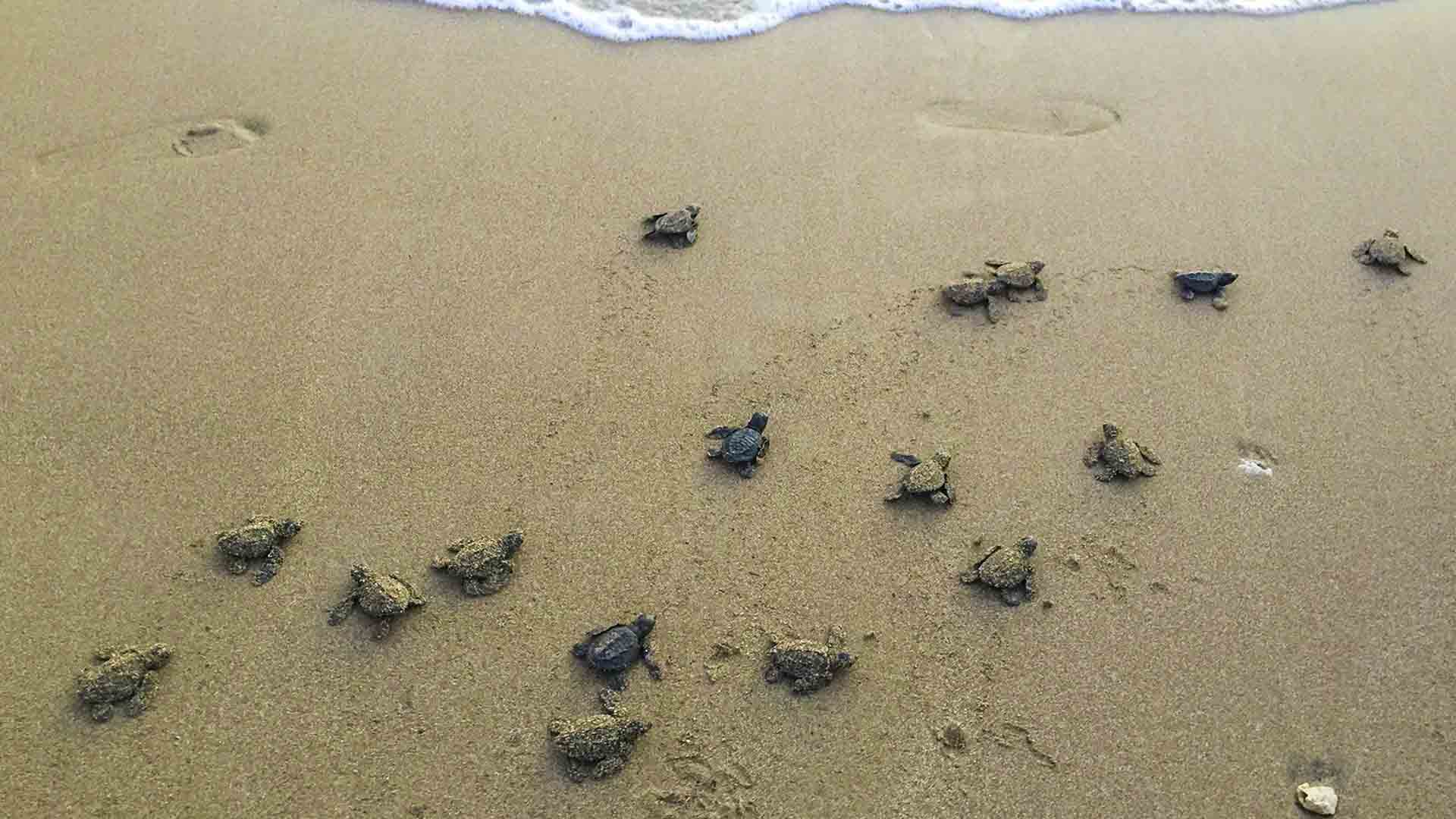SM Prime’s premier eco-tourism development, Hamilo Coast continues to be a haven for sea turtles. Out of 5 marine turtle species residing in the Philippines, three can be found in the area – the Olive Ridley, Green and Hawksbill.
Approximately 138 newly hatched Olive Ridley turtles were most recently released as of November 2019 to the coastal waters of Pico Beach in Hamilo Coast. These are always much-celebrated events as the Olive Ridley turtle is the most abundant yet the most vulnerable due to poaching and pollution. More turtle nests are expected to hatch by the yearend.

Data from the Hamilo Coast Sustainability Team shows that an average of five (5) nest sightings are recorded per year, particularly during the hatching season of August to December. Actual nests are indicated by tracks left by the mother turtle. Unfortunately, these traces are easily washed away by rain and waves, hence locating these nests can sometimes be difficult. According to the Hamilo Coast Sustainability Team, “The coves of Hamilo Coast are nesting grounds for these turtles to lay their eggs. We proactively monitor and protect these nests until the eggs hatch and the hatchlings are immediately released. Protecting the nests will help keep predators away, thereby increasing these gentle creatures’ survivability rate and chances of growing to maturity”.

Sadly, only 1 in 1,000 hatchlings will survive to adulthood. Turtles mistake plastic for jellyfish, a mainstay in their normal diet. As a result, many turtles die due to suffocation and indigestion – truly another strong argument against throwing trash indiscriminately and using single-use plastics.
Providing a safe haven for nesting turtles is but one of the many sustainability initiatives of Hamilo Coast. Other programs to sustain and conserve the marine environment include the declaration of select coves as Marine Protected Areas, marine mammal rescue training, and cultivation of true giant clams.






















